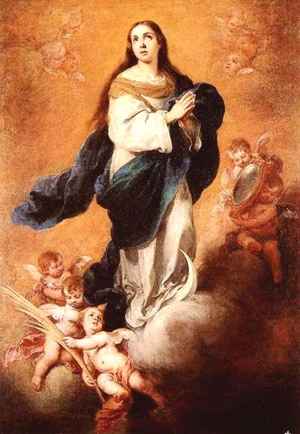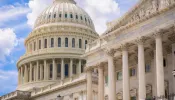 The Immaculate Conception, a solemnity celebrated on December 8, is the patronal feast of the United States.
The Immaculate Conception, a solemnity celebrated on December 8, is the patronal feast of the United States.
In 1854, Pope Pius IX's solemn declaration, Ineffabilis Deus (link al documento que está en Marian documents), clarified with finality the long-held belief of the Church that Mary was conceived free from original sin. In proclaiming the Immaculate Conception of Mary as a dogma of the Church, the pope expressed precisely and clearly that Mary was conceived free from the stain of original sin. This privilege of Mary derives from God's having chosen her as Mother of the Savior; thus she received the benefits of salvation in Christ from the very moment of her conception.
This great gift to Mary, an ordinary human being just like us, was fitting because she was destined to be Mother of God. The purity and holiness of the Blessed Virgin Mary is a model for all Christians.
The Catechism of the Catholic Church says of the Immaculate Conception of Mary:
490. To become the mother of the Savior, Mary "was enriched by God with gifts appropriate to such a role". The angel Gabriel at the moment of the annunciation salutes her as "full of grace". In fact, in order for Mary to be able to give the free assent of her faith to the announcement of her vocation, it was necessary that she be wholly borne by God's grace.
491. Through the centuries the Church has become ever more aware that Mary, "full of grace" through God, was redeemed from the moment of her conception. That is what the dogma of the Immaculate Conception confesses, as Pope Pius IX proclaimed in 1844: "The most Blessed Virgin Mary was, from the first moment of her conception, by a singular grace and privilege of almighty God and by virtue of the merits of Jesus Christ, Savior of the human race, preserved immune from all stain of original sin." (Pius IX, Ineffabilis Deus, 1854.)
492. The "splendor of an entirely unique holiness" by which Mary is "enriched from the first instant of her conception" comes wholly from Christ: she is "redeemed, in a more exalted fashion, by reason of the merits of her Son." The Father blessed Mary more than any other created person "in Christ with every spiritual blessing in the heavenly places" and chose her "in Christ before the foundation of the world, to be holy and blameless before him in love."
493. The Fathers of the Eastern tradition call the Mother of God "the All-Holy" (Panagia) and celebrate her as "free from any stain of sin, as though fashioned by the Holy Spirit and formed as a new creature". By the grace of God Mary remained free of every personal sin her whole life long.
The National Shrine in the US
Mary is honored at the Basilica of the National Shrine of the Immaculate Conception as the Patroness of the United States of America. In May of 1846, twenty-one bishops and one archbishop attended the Sixth Provincial Council of Baltimore, along with their theologians. It was at this Council that the American Hierarchy named for the first time, the Blessed Virgin Mary under the title of the Immaculate Conception as the Patroness of the United States. Pope Pius IX ratified this action of the American hierarchy in February 1847.
There are seventy chapels and oratories. The various ethnic representations of the Blessed Mother given in mosaic, sculpture and other artistic renderings, symbolic of the immigrant population of America, as well as those of saints and biblical and salvific events, richly ornament the interior and exterior of the church. In addition, the upper and lower churches, inside and outside, provide a visual account of the history of the Roman Catholic faith, as well as the history of the Catholic Church in the United States of America.






![“I have heard some great sermons throughout my life on truth and on goodness, [but] not enough on beauty yet,” says the celebrated Scottish composer Sir James MacMillan, shown here conducting The Catholic University of America Chorale on April 9, 2025.](https://www.catholicnewsagency.com/storage/image/macmillan.april.2025.jpg?w=175&h=100)




